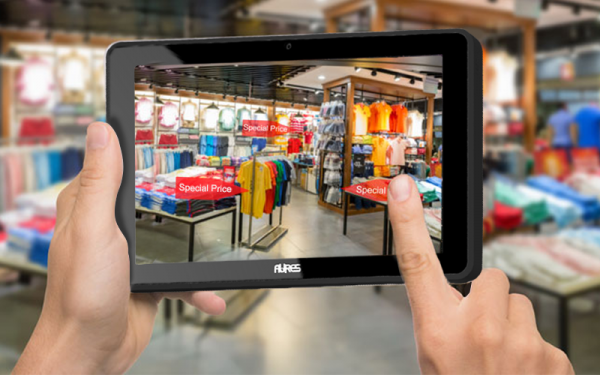by Steve Hanrahan, Business Development Manager, AURES UK
In his forward to the AURES EPOS Predictions Report 2018, our deputy CEO Moray Boyd forecast that Mobile POS (M-POS) would be the main trend in point of sale technology over the next five years.
To pick up on his theme, we decided to take a closer look at three uses M-POS systems can be put to in retail stores, assessing how the technology is evolving for each purpose, and weighing up the likelihood of each becoming a mainstream trend in POS.
Mobile in-store payment platform
Mobile payment is of course a big trend in relation to smartphones and mobile wallets, which some analysts predict will eventually replace the use of contactless cards. But in terms of POS, mobility in payments is all about breaking free of the fixed sales area and taking transactions across the store.
For retailers, this has numerous advantages, from being able to seal sales ‘in the moment’ as staff offer advice and service to customers, to reducing queues and freeing up more space for displays. In terms of technology, the main requirements are a portable handheld device (tablets are ideal), robust wi-fi for maximum mobility and wireless payment devices.
While examples such as the AURES SWING fulfil these criteria, M-POS is not yet widely used as a full transactional platform, although this is swiftly evolving. 5 years from now the landscape will have changed dramatically from today, with the expectation that the customer can complete their transactions in numerous ways that is most suitable to them and not restricted to the physical layout of the store.
Customer service support
A more common use of M-POS tablets at present is as a customer support device carried by staff on the shop floor. There has been a lot of talk over the past couple of years about ‘point of sale’ evolving into ‘point of service’. Well, this use of M-POS tablets encapsulates the concept perfectly, demonstrating how POS technology is evolving beyond processing transactions.
The key here is that modern EPOS software systems are not standalone financial ledgers but integrated with other digital business platforms – stock management, eCommerce, CRM, marketing and so on. Made available on a mobile tablet, access to all of this business information becomes a powerful service tool.
Staff can quickly look up product availability in the stockroom, other stores or even in the warehouse if an item in a certain colour or size is not available on the shelf. Instead of losing the sale, they could even place an order via the store’s eCommerce site there and then, arranging delivery to the customer’s home. Store assistants could also access marketing materials to help make recommendations, cross sell and up sell, or look up previous purchases on the CRM system to personalise the service they offer.
M-POS solutions are already very much capable of delivering this kind of function, and it seems likely that this is how M-POS will be most commonly used in retail in the short to medium term.
Digital aisle self service
An extension of the service concept is the idea of using M-POS as a self-service information point for customers. A specific example of this is the concept of the digital aisle, sometimes referred to as an ‘endless aisle’ because it removes physical restrictions on the range of products you can display in store.
Instead of cluttering up shelf space with as many products as possible, stores can focus on effective and pleasing displays, with the bulk of the product range available to browse on tablets located around the store.
With touchscreens now standard on modular panels PCs, tablets and self-service kiosks, such systems offer an intuitive, easy to navigate option for customers. One key consideration is how to fix them to shelves or table spaces ready for customers to use. To this end, the AURES SWING provides and innovative, flexible solution – our trademark Pogo magnetic attachment and connection point, which allows the SWING unit to be used equally as a mobile tablet and a fixed module.




